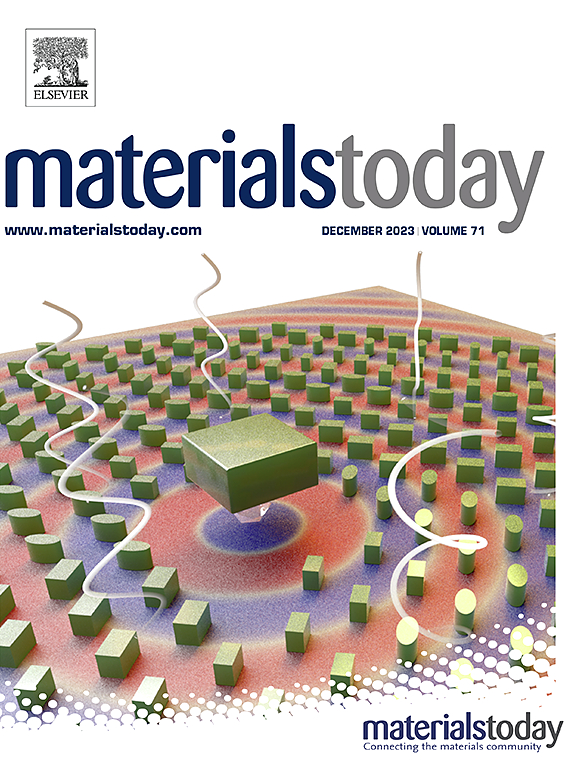Moving towards materials with humanoid functionality: Sensing their speech with piezoelectric nanowebs
IF 21.1
1区 材料科学
Q1 MATERIALS SCIENCE, MULTIDISCIPLINARY
引用次数: 0
Abstract
The new concept of “humanoid matter” is presented by exploring if the sound emitted by materials embeds phonetic signatures. This overarching topic is here narrowed down to the analysis of the acoustic sound emitted by the sudden hierarchical rupture of microfibers in a composite. While such a low-energy pain-like event for the material is hardly detected with the most advanced structural health monitoring systems, here it is accurately captured (i.e., “listened”) with a piezoelectric nanoweb that weighs less than 0.25% than the reference microphone. As humans react to pain with an unarticulated voice pattern, the composite delivers an unvoiced/voiced pattern when suddenly damaged. The phonetic analysis demonstrates the feasibility of using the energy released by a mechanical failure as sound source (i.e., vocal cords) that excites the acoustic resonances of the material (i.e., vocal tract). Differently from healthy humans, the progressive failures slightly modulate the vibration speed of the vocal cords (pitch) due to the stiffness changes of the vocal tract which thus modifies its sound shaping action. The sound signals from the material carry the phonetic fingerprints of the microdamage. This work represents a first step towards materials that possess humanoid functionalities which can potentially revolutionize human-object interaction.

向具有类人功能的材料迈进:用压电纳米网感应它们的语言
通过探索材料发出的声音是否包含语音特征,提出了“类人物质”的新概念。这个首要的话题在这里被缩小到由复合材料中微纤维突然分层破裂发出的声学声音的分析。虽然最先进的结构健康监测系统很难检测到这种材料的低能量类似疼痛的事件,但在这里,它被精确地捕获(即“聆听”),其重量小于参考麦克风的0.25%。就像人类对疼痛的反应是一种不清晰的声音模式一样,这种复合材料在突然受损时也会发出一种不清晰的声音模式。语音分析证明了利用机械故障释放的能量作为声源(即声带)激发材料(即声道)的声学共振的可行性。与健康人不同的是,由于声道的刚度变化,进行性故障轻微地调节了声带的振动速度(音高),从而改变了其塑形作用。来自材料的声音信号带有微损伤的语音指纹。这项工作代表了迈向具有类人功能的材料的第一步,这可能会彻底改变人与物体的互动。
本文章由计算机程序翻译,如有差异,请以英文原文为准。
求助全文
约1分钟内获得全文
求助全文
来源期刊

Materials Today
工程技术-材料科学:综合
CiteScore
36.30
自引率
1.20%
发文量
237
审稿时长
23 days
期刊介绍:
Materials Today is the leading journal in the Materials Today family, focusing on the latest and most impactful work in the materials science community. With a reputation for excellence in news and reviews, the journal has now expanded its coverage to include original research and aims to be at the forefront of the field.
We welcome comprehensive articles, short communications, and review articles from established leaders in the rapidly evolving fields of materials science and related disciplines. We strive to provide authors with rigorous peer review, fast publication, and maximum exposure for their work. While we only accept the most significant manuscripts, our speedy evaluation process ensures that there are no unnecessary publication delays.
 求助内容:
求助内容: 应助结果提醒方式:
应助结果提醒方式:


